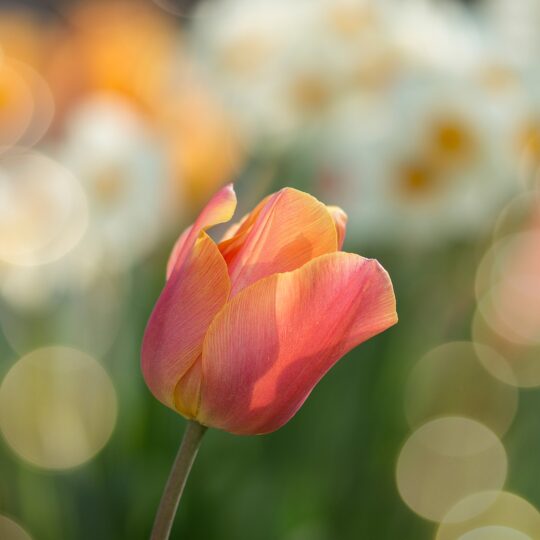
Greenhouse and Nursery is the number one agricultural commodity in the state of Oregon. Cut flowers and bulbs are part of that industry. There are about 300 farms growing flowers and bulbs in the state. In 2019, the value of cut and potted flowers and bedding plants was 145 million dollars. Oregon is 10th in the country in flower production.1
The Netherlands is the number one exporter of flowers in the world, and that is where cut flower production got its start. In the 16 and 1700s, greenhouses were created. They made it so that flowers could be grown year-round, not just in spring and summer. European settlers brought flower production to North America, along with greenhouses.2
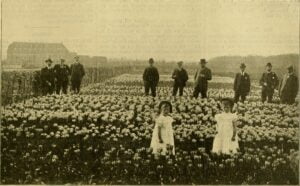
As technology advanced and brought inventions like air conditioning and airplanes, the cut flower industry was able to grow and move into different areas.
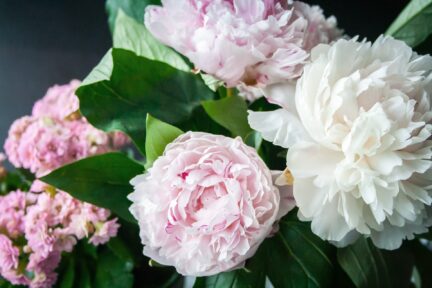
Peony plants are a bushy flowering plant, somewhat like a shrub. They produce large blooms of all colors except for blue. Peony plants can live for more than 100 years. They are propagated by dividing their roots and replanting. Peonies will die back or lose their leaves in the fall but will come back and bloom each spring.

Tulips are a spring-blooming flower that grow from bulbs. They have boldly colored petals that are symmetrical around the stem. Growing a tulip from a seed can take 5 to 8 years before flowering. Instead, they are normally propagated by bulbs. Tulips have been grown in the United States since at least the mid-1800s.
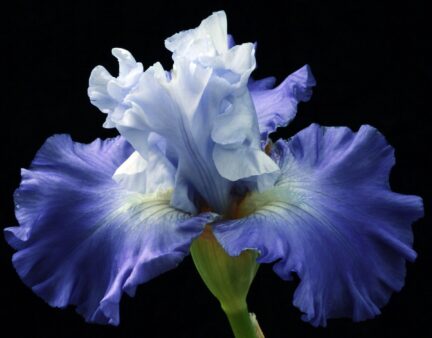
Iris are perennial plants that bloom in March and April. There are around 300 different species of iris. The species are many different colors and styles. Oregon grown irises have won national and international awards. Irises grow from rhizomes or bulbs and have petals that open out like a fan.
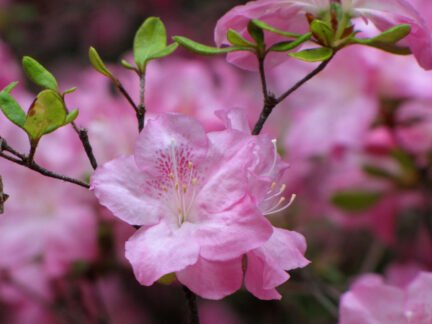
Oregon is the number one producer in the United States of potted florist azaleas. In 2019, the state produced 59% of all the ones grown in the country. Azaleas are a flowering shrub that blooms in the spring. They are mostly red, pink, and purple. In 2011, Oregon sold more than 13.5 million dollars worth of azaleas.
Some cut flowers are grown from seed, while others are grown from bulbs. This section will cover production using bulbs, specifically tulips.
Bulbs are planted in the early fall.5 These bulbs have no roots when they are planted but will begin to grow roots in November. December and January are the rest period. They need a few weeks of cold weather to prepare to flower. February through March are the growing period for the bulbs. Leaves and flowers start to push out of the bulb. Tulips bloom in April and May. After bloom is over, the foliage will die and wither. New bulbs will grow out of the original bulb and get ready to grow more flowers the next year.6 The new bulbs can be dug up to be sold, which is what many flower farmers in Oregon do.
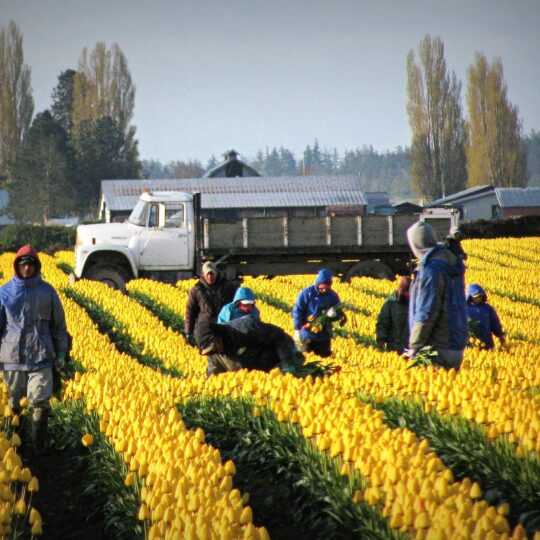
Flower farmers plant their flowers in greenhouses or outside, depending on the type of flower. When it comes time to harvest, the flowers are cut by hand. The flowers are put into buckets of water once they are cut. They are kept in cold storage until they are sold.
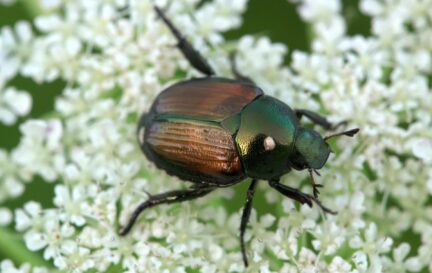
Japanese beetles are an invasive species that Oregon works very hard to keep out of the state. The adult beetles eat the leaves of plants. Without leaves, plants can’t photosynthesize. The young grubs of Japanese beetles can eat the roots of plants, which keeps them from getting the water and nutrients they need to grow. When the beetles are found, they are eradicated.7.
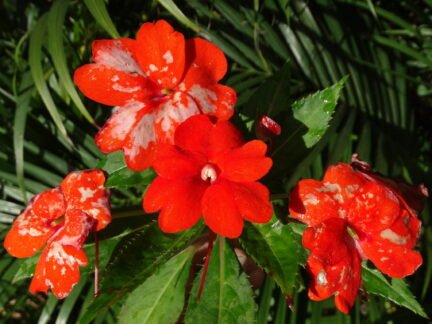
Botrytis is sometimes called gray mold. It is a fungus that infects flowers at all stages of growth. When it infects the petals, it causes tan spots that become fuzzy and gray. The flower petals can stick together and be slimy. The fungus can also get on the leaves and stems, causing stems to wilt.8
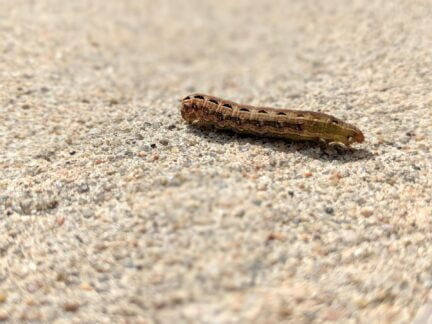
Cutworms and other caterpillars feed on plants at ground level. They can eat through plant stems completely. They feed in groups and can quickly damage many flower stems. Cutworms have also been known to feed on leaves and roots.9
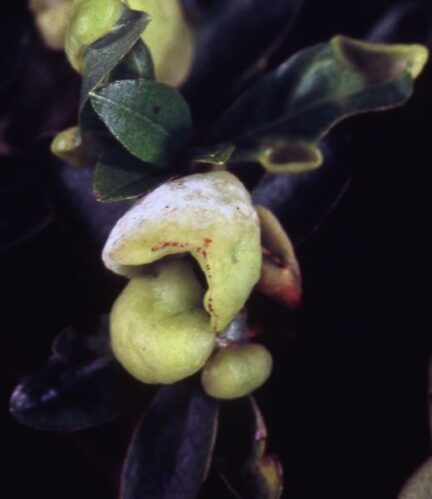
Leaf and flower gall is caused by a fungus that spends the winter as spores on plants. It is primarily a problem in azaleas. It infects the plant in the spring as buds start to open. Leaves can become thick and covered in spores. Plants with this disease can produce fewer or smaller flowers. Infected branches can die.10



Flowers that are purchased and planted in bulk to add color to flower beds.
To do away with completely; wipe out.
A person or company who sells goods to other countries.
The leaves on a plant.
A building used to grow plants all year long. A greenhouse usually has a glass roof and walls.
A plant that lives longer than two years.
Using sunlight to change water and carbon dioxide into food for itself.
To multiply from parent stock.
An underground horizontal stem that bears shoots along its upper surface.
A tiny reproductive body made up of one or more cells, produced by certain animals and plants.
Having a form, structure, or parts that are equal and have matching distribution on each side of a central line or position.